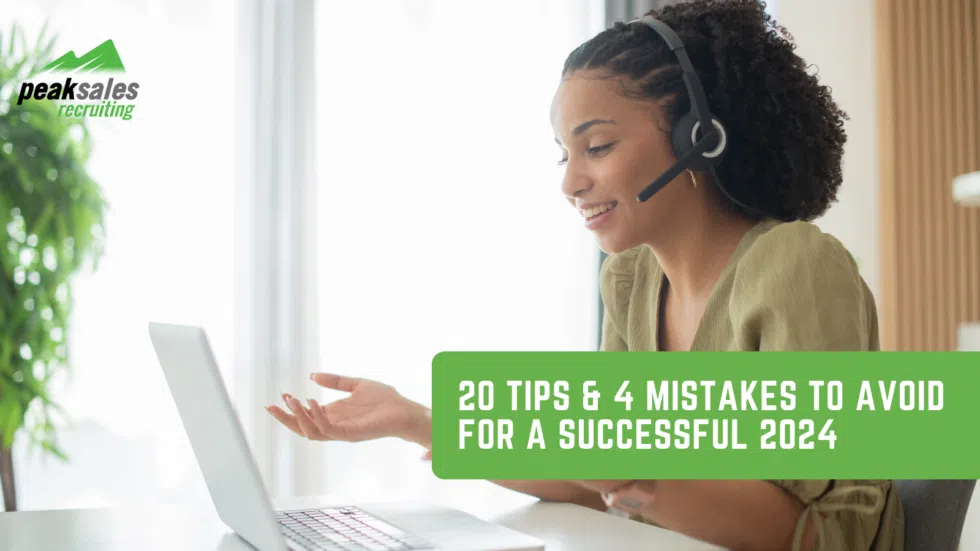Elite athletes, even the best of the best, invest constant time and resources into training. Famously, Michael Jordan spent time drilling fundamental skills even as he achieved win after win. To sustain high-performance levels, salespeople need to find consistent training opportunities.
Why Traditional Sales Training Isn’t Enough
Reading classic sales books and taking courses is a fantastic way to get started for a new salesperson. Some companies go beyond these steps and invite external experts to run occasional workshops. These resources can help.
Off-the-shelf external sales training resources are rarely a perfect fit for your specific needs. Sure, with the right amount of effort and reflection, your sales staff may be able to draw lessons from general-purpose sales training. However, asking busy professionals to participate in training and then connect the dots about how it might be helpful to their work is asking a great deal.
One solution to that challenge is to pay an expert sales consultant to provide coaching and training. When you find the right expert, this approach is often an excellent way to inspire your team and quickly increase their results. The downside is that sales consultants know their value and charge high prices.
When you need to boost the skills of your sales team, consider looking inside your team for insights. Running a virtual lunch & learn session to train your salespeople is a powerful way to identify and spread best practices.
5 Reasons To Start Offering
Virtual Lunch & Learn Sales Trainings:
You might not immediately see the value if you’ve never offered a virtual lunch and learn session to train your sales team. There are five reasons why running these sessions is worth your time and effort.
1. Built-In Credibility
When a successful salesperson on your team runs a training session, the person has instant credibility. As a result, it is easy to minimize the typical doubts and skepticism that reduce training effectiveness.
2. Focused “Just In Time” Format
A virtual lunch and learn session is intended to be short and focused. We recommend keeping your session to a maximum of fifty minutes. This allows your staff to take a break before diving into afternoon meetings.
3. Building A Custom Sales Training Library
By recording your virtual lunch and learn session, you can gradually build up a library of training sessions. Over the course of a year, you can build up a sizeable body of knowledge. That resource will become a resource that you can use to onboard future hires and support ongoing coaching.
4. Increase Teamwork
A virtual lunch and learn does not need to be designed or presented by a single person. In many cases, having two or three presenters is ideal because it adds a variety of perspectives to the topic. For example, you might have two high-performing sales representatives in different offices who haven’t worked together. Giving them the chance to work together on the presentation means each person will have a more robust internal network.
5. Strengthen Remote Employee Engagement
More and more sales jobs are fully or partially remote. To promote engagement, give your remote staff the chance to participate in, and create virtual training.
Including remote employees in training projects is just one way you can help them to succeed. See our post on How to Succeed as a Remote Salesperson for ten powerful ways to hit your goals in today’s work anywhere environment.
Planning A Virtual Lunch & Learn Session
Now that you know why these virtual training sessions are valuable let’s break down how to plan your first session.
1. Choose Your Sales Topic Wisely
Selecting the right topic is critical to making the session valuable. There are three types of topics that tend to work well in this format: emerging sales trends, current challenges, or success stories.
For example, you might have an SDR (Sales Development Representative) achieving incredible results with cold email or video messages. Asking that person to deliver training based on their achievement is brilliant. Alternatively, you might ask your top account manager to share tips on the strategies to boost customer retention.
Before settling on a topic, ask yourself, “Can these ideas, tactics, and strategies be applied this week?” If the answer is no, look for another topic.
2. Call For Volunteers
Ask for volunteers to come forward to lead the training. If there is limited interest, invite your team to suggest different topics. If your sales team is overwhelmed right now, accept that feedback and make a note to revisit training in a few weeks.
3. Schedule Your Session
Avoid scheduling the training session close to standard sales deadlines like quarter-end or year-end. If you have sales teams in several time zones, you may need to plan several sessions at different times to cover everyone.
4. Create The Presentation
The next step is to create the training presentation. Encourage your presenters to include exercises. For example, roleplaying a sales call for a few minutes might be helpful if the presentation relates to objection handling.
5. Record The Presentation (optional)
Once the presentation is ready, use a video conference app like Zoom that supports call recordings. You can share the recording using Google Drive, SharePoint, or other secure file-sharing services.
If your presenters are uncomfortable with recording the session, don’t insist on it. It’s more important to ensure quality participation.
6. Collect Feedback
After delivering the lunch and learn presentation, gather feedback from attendees on what they liked. In addition to asking what they liked about the session, invite suggestions for future sessions.
7. Add The Training To Your Library (optional)
After the sales lunch & learn session is completed, upload it to your training library. You can certainly leverage a learning management system (LMS) if you have a learning management system. Smaller companies can use a more straightforward solution like uploading the video recordings to a service like Dropbox.
Want Even Faster Sales Results?
Upskilling your sales team through training is worthwhile, but it has a downside. It can take weeks or months to create a new training program. Creating an internal sales training program also assumes you already have a few high-performing sales professionals to leverage.
If you are rebuilding or expanding your sales force to new territories, it might not be the right time to focus on training. Peak has a track record of finding and recruiting successful salespeople. Contact us today to discuss your sales needs.
Looking for a topic for your first sales training session? Considering starting with the Challenger Sales Model. You can learn more here.
Latest posts by Ryan Thornton (see all)
- 3 Ways Your Employees Will Sabotage Hitting Year End Targets – December 27, 2023
- 7 Ways to Hit Your Year End Target With Ease – December 20, 2023
- How to Handle Counter Offers — and Win Top Talent – December 18, 2023



